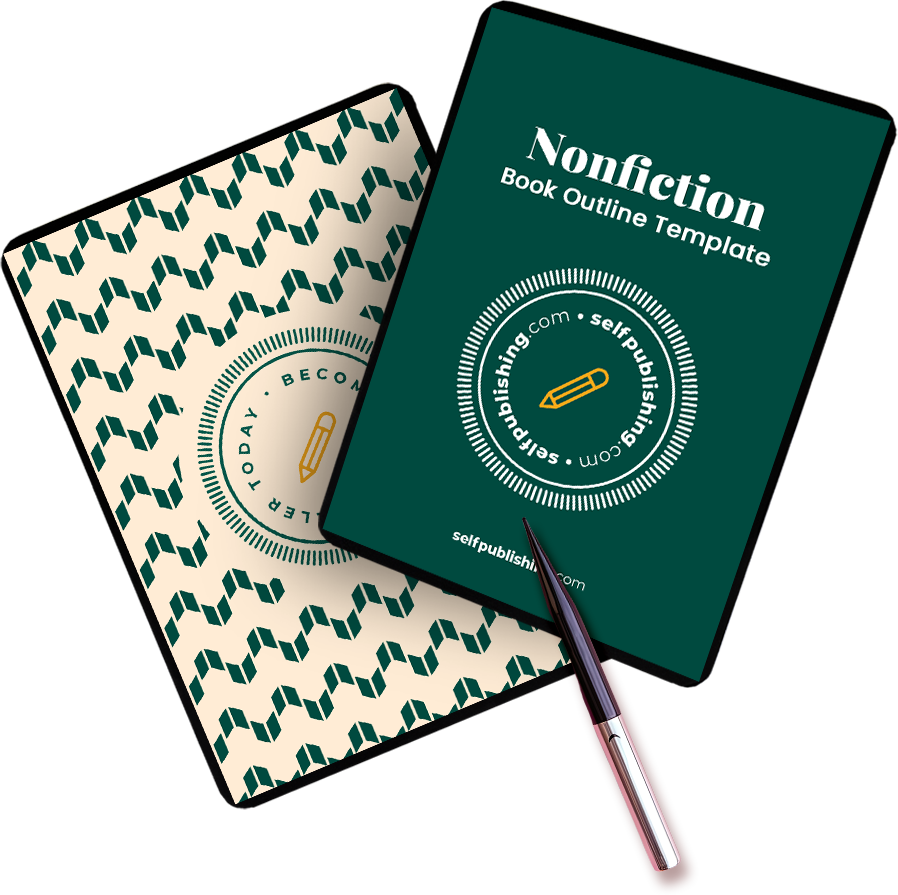Have you seen the charming 2009 film Julie and Julia? In it, the main character Julie cooks every recipe from Julia Childs’ cookbook and blogs about it. The film is based on a book the real Julie wrote, pulled from her real-life blog.
While you may not be aiming to inspire a Meryl Streep film, there are other good reasons to turn your blog into a book. It can be a good way to expand your audience, grow your business, or position yourself as an authority in your field. And thankfully, the blog to book process isn’t as overwhelming as you may think.
Can I turn a blog into a book?
Yes, you can turn a blog into a book! In fact, you’ve likely already written well over the word count of an average book or novel. So, not only can you, but we whole-heartedly think you should.
But if you want to publish and sell your book, you can’t simply print out your blog pages (or publish them as an ebook) and call it a day.
You’ll need to edit, reformat, and supplement your blog posts with additional copy to turn them into a cohesive experience for the reader.
More on that in a second! It’s not as daunting as it sounds. We promise you’ve done the hard work, and we have the tools and resources to make writing and publishing your blog as a book easier than you probably think.
For now, let’s answer a few questions that a successful blogger might have about turning their already-published online blog into a book.
Why would I turn my blog into a book?
Any time you convert your writing into a new medium, like a physical book or an ebook, you’re creating an opportunity to reach a wider audience. We talk a lot about how a book is the ultimate one-to-many tool for sharing your expertise and your ideas. As someone with a blog, you’ve likely already experienced this. However, a book centralizes all of the best parts of your blog into one resource they can physically hold, download, and/or read.
It shares exactly the tips, anecdotes, and information you want – and in the order you want them to read (which you can’t control with blog posts).
This can potentially mean greater influence, more income, and more opportunities. It’s also nice to have a compilation of your work for yourself and fans of your blogs. Simply put, writing a book is profitable.
Plus, you have a built-in platform and loyal audience that will be receptive when it comes time to start your book marketing. You know these people already love your writing – just imagine how excited they’d be to support an upcoming book launch!
How to turn your blog into a book: step-by-step
Remember how we said you can’t just turn your blog posts into a book without making any changes? There are a few reasons for that:
- Book readers have different expectations than blog readers. Folks who read your blog are expecting to see something a little less polished; a blog post doesn’t typically go through several edit rounds. Book readers, on the other hand, expect more refined, in-depth content.
- Blogs are usually optimized for SEO; books aren’t. If you’re writing your blog to be optimized for search, you’re likely writing differently than you would a book, so you’ll need to modify your copy accordingly.
- Blog posts stand alone, but a book needs to be cohesive. You’ll need to add context to help your book flow.
With that in mind, let’s talk about how to transform those blog posts into book material.
Step 1: Make sure you know the topic + intention of your book
Any time you set out to write a book, you need to know why you’re doing it. Who do you want to reach with your writing, and why?
While the content of your blog posts will help guide your decision, you’ll likely need to narrow your focus.
For example, if you have a travel blog, you may decide you want to write a book for young travelers about how to see the world on a shoestring budget.
So you’ll only pull content from your blog that supports that topic.
This is also a good time to create a working title for your book. Want a quick, easy way to do this? Use our free book title generator for thousands of ideas! One of them is sure to align with your book idea and provide enough inspiration to get you going on that rough draft.
Step 2: Outline your book
Just like with any other book, you’ll need to outline this one. We have a helpful guide to outlining a book you can use.
If your blog is divided into categories, those can provide insight into how you may want to structure your book, too.
Step 3: Choose which blog content goes into your book
Now that you have your book outlined, it’s time to consider which blog content fits into it. Remember to get close to your book’s purpose and theme. Any blog content that doesn’t directly support it doesn’t belong in your book.
You may also be able to include content from guest posts you’ve written, but you’ll need to check with the owner of the blog featuring your post.
You’ll want to consider the flow of your book, too. While you should have mapped this out in your outline, be sure to choose blog content that transitions naturally from section to section.
Lastly, keep quality in mind. You’ll be editing all of the content in your book, but it’s far easier to start with well-thought-out, thoroughly researched, and decently-written blog posts.
Step 4: Refine and supplement your blog content
Now’s the time to turn your chosen blog content into something your book readers will love. Here are a few things to keep in mind as you transform it from an online blog format to a written book:
- Depth: As we discussed earlier, blog posts tend to be shorter and less thorough than book content. So you’ll likely need to add more context or research for your book.
- Encouraging conversation. On your blog, it’s easy for readers to share comments, “like” photos, and more. They don’t have the same capability with a book–at least not a physical one–so consider providing other ways to engage, like conversation prompts.
- Flow. You’ll need to find a way to help the content from your blog flow together from chapter to chapter. This might look like adding transitions, additional information, and/or writing entirely new chapters to supplement your existing content.
Step 5: Edit your manuscript + create an author website
Even if you’ve already thoroughly edited your blog posts, you still need to edit your completed manuscript. In fact, your rough draft will likely have to undergo multiple types of book editing before it’s ready for the digital bookshelves.
We recommend doing a self-edit first, then working with a professional editor to prepare your book for publication.
While your editor is proofing your manuscript, this is a great time to create an author website, or rather a dedicated page on your website. This is critical for shifting your digital presence from a blogger to a soon-to-be author, getting people on your book launch email list, booking speaking engagements, and marketing your book in general.
Step 6: Publish and market your book
Congratulations! You have a polished manuscript in your hand. Now it’s time to publish it and get the word out.
We have plenty of guides and resources on how to leverage Amazon KDP, the most popular, profitable platform for self-published authors.
- Getting an ISBN Number for Your Book
- A Guide to Amazon KDP
- Should You Choose Self-Publishing or Traditional Publishing?
What is the best service to turn a blog into a book?
A blog can be a very personal thing. Turning yours into a book doesn’t mean you have to sacrifice the artistry, individuality, writing style, voice and/or control you’re used to having with your writing. That is, as long as you go the self-publishing route.
At selfpublishing.com, we help you publish a book and publish an e-book without surrendering all of your time, royalties, and creative freedom to a big publishing house.
We’ll guide you through every step from ideation to publishing to marketing–allowing you to retain control of your vision and your time. Want to learn more? Start by booking a free call.


























